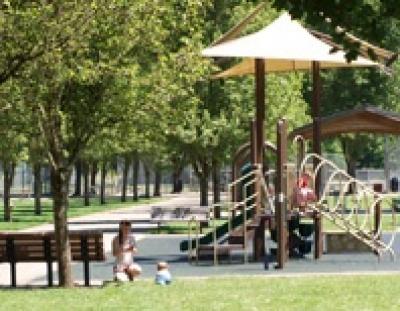2012 Community Survey
Damema Mann, Senior Project Manager of the NCS at the National Research Center in Boulder, CO, said, “Wilsonville’s community survey results are stellar across the board. Compared to surveys of over 500 jurisdictions across the U.S., Wilsonville has some of the best results that we’ve ever seen. According to residents, the City is doing an overall excellent or good job in nearly every category surveyed.”
Specific examples where respondents to the Wilsonville survey rated the City as either “excellent” or “good” producing survey results that are “much above the national benchmark” include:
- 94 percent of respondents rate Wilsonville as an excellent/good place to live.
- 94 percent of respondents rate city parks as excellent/good.
- 92 percent of respondents rate overall quality of life in Wilsonville as excellent/good.
- 90 percent of respondents rate the overall visual appearance of Wilsonville as excellent/good.
- 85 percent of respondents rate SMART bus/transit services as excellent/good.
- 84 percent or more of respondents rate knowledge, courtesy, responsiveness and overall impression of City of Wilsonville employees as excellent/good.
- 80 percent of respondents rate the preservation of natural areas such as open space, farmlands and greenbelts as excellent/good.
- 77 percent of respondents rate the overall quality of businesses and service establishments as excellent/good.
- 74 percent of respondents rate Wilsonville as an excellent/good place to work.
- 69 percent of respondents rate Wilsonville’s opportunities to participate in
community matters as excellent/good. - 65 percent of respondents rate the overall direction that Wilsonville is taking as excellent/good.
- 61 percent of respondents rate the job Wilsonville government does at welcoming citizen involvement as excellent/good.
- 60 percent of respondents rate the value of services for the taxes paid to Wilsonville as excellent/good.
Additionally, the City asked residents a number of custom questions, which found that:
- 90 percent or more of respondents strongly or somewhat support efforts to actively recruit businesses to locate here or market the City to attract new businesses.
- 89 percent of respondents rate the Boones Ferry Messenger (City Newsletter) as a major source of information regarding Wilsonville City Government.
Residents indicated that the biggest priority facing the City of Wilsonville over the next five years include:
- Balancing growth with aesthetics and quality of life, keeping a small-town feel.
- Effectively managing the flow of traffic (vehicle) with all the new construction coming.
- Bringing businesses to Wilsonville to fill vacant retail, office and industrial buildings before building more! Be business friendly; bring in jobs that pay a “Wilsonville wage.”
Mann suggests that the City continue to look at opportunities for improved civic engagement. Mann presented a summary of the results of the Wilsonville Community Survey at Wilsonville City Council meeting on Monday, July 2.
City Manager Bryan Cosgrove said that, “The survey results show that residents are overall very pleased with the quality of the City’s public services. While we still have room for improvement, residents substantially feel that the City’s community leadership over time collectively has done a commendable job of guiding Wilsonville’s development and providing key services of value to the public.”
Ratings of community characteristics were compared to the benchmark database. Of the 26 characteristics for which comparisons were available, 20 were above the national benchmark comparison, five were similar to the national benchmark comparison and one was below.
In general, survey respondents demonstrated strong trust in local government. A majority rated the overall direction being taken by the City of Wilsonville as “good” or “excellent.” This was much higher than the benchmark. Those residents who had interacted with an employee of the City of Wilsonville in the previous 12 months gave high marks to those employees. Nearly all rated their overall impression of employees as “excellent” or “good.”
On average, residents gave favorable ratings to a majority of local government services. City services rated were able to be compared to the benchmark database. Of the 32 services for which comparisons were available, 28 were above the benchmark comparison and four were similar to the benchmark comparison.
Background Information on the Wilsonville Community Survey
The National Citizen Survey™ (NCS) is a collaborative effort between National Research Center, Inc. (NRC) and the International City/County Management Association (ICMA). The NCS was developed by NRC to provide a statistically valid survey of resident opinions about community and services provided by local government. The NCS focuses on a series of community characteristics and local government services, as well as issues of public trust. Resident behaviors related to civic engagement in the community also were measured in the survey.
The survey and its administration are standardized to assure high quality research methods and directly comparable results across The National Citizen Survey™ jurisdictions. Participating households are selected at random and the household member who responds is selected without bias. Multiple mailings give each household more than one chance to participate with self-addressed and postage-paid envelopes. Results are statistically weighted to reflect the proper demographic composition of the entire community. A total of 794 completed surveys were obtained, providing an overall response rate of 28%. Typically, response rates obtained on citizen surveys range from 25% to 40%. The margin of error for survey results is plus or minus three percentage points.
The City of Wilsonville chose to have comparisons made to the entire database. A benchmark comparison (the average rating from all the comparison jurisdictions where a similar question was asked) has been provided when a similar question on the City of Wilsonville survey was included in NRC’s database and there were at least five jurisdictions in which the question was asked. For most questions compared to the entire dataset, there were more than 100 jurisdictions included in the benchmark comparison.





